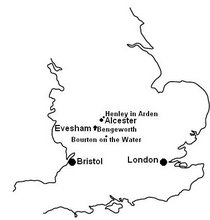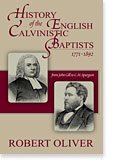As mentioned, I've corresponded with a descendant of Richard Hall (1728-1801) who eventually became a member of Beddome's Bourton congregation. Hall was born in Red Lion Street, Southwark, March 4, 1729 (1728 he'd say). His Mother Ann (nee Kearse) was 25, having married Francis Hall two years earlier. They had no other children.
Red Lion Street is just off Borough High Street, which in turn leads straight to London Bridge - then an unfashionable but cheap place to live. Francis was a hosier and Richard followed him into the trade. MR says Hall Junior seems to have had a good education and always had books around him. Pilgrims Progress, Milton's works and Foxe’s Book of Martyrs are "among his well-thumbed favourites". Religious treatises figure large from an early age.
Red Lion Street is just off Borough High Street, which in turn leads straight to London Bridge - then an unfashionable but cheap place to live. Francis was a hosier and Richard followed him into the trade. MR says Hall Junior seems to have had a good education and always had books around him. Pilgrims Progress, Milton's works and Foxe’s Book of Martyrs are "among his well-thumbed favourites". Religious treatises figure large from an early age.
Hall later wrote "From a child I have small conscience of secret prayer and remember to have been extended thereto by my dear mother when very young, perhaps not more than that six or seven years old". His copy of Willison's Catechism (first published 1735) has the earliest version of his signature on the front page.
The family Bible was a 1578 Geneva Bible that MR still has. Hall had many Bibles – his favourite being an annotated Pasham’s Bible, which he mentions specifically in his will (printed by J W Pasham in London from 1776).
Throughout the 1730s Hall lived with his father "over the shop". MR suggests that at some stage the Halls' paths crossed those of the Sewards, particularly Benjamin, no doubt through the church they attended, where John Gill (1697-1771) was pastor from 1719. Further, like Francis, Benjamin was in his thirties, from a well-off family and had come to London to be apprenticed as a hosier. Seward and Eleanor Knapp had two daughters, Frances Seward (1732-1766) born when Hall was about 4 and Eleanor Seward (1733-1780). Eleanor senior died in child birth so the Seward girls were brought up back in Badsey and Bengeworth. MR is quite confident of trips there by the young Hall, laying a foundation for the later marriage to Elinor.
When Hall was 13 his mother died (April 17, 1741) aged 38. In less than 12 months his father remarried - a widow, Turner by name. Hall had a good relationship with her until her death, 1765.
The family Bible was a 1578 Geneva Bible that MR still has. Hall had many Bibles – his favourite being an annotated Pasham’s Bible, which he mentions specifically in his will (printed by J W Pasham in London from 1776).
Throughout the 1730s Hall lived with his father "over the shop". MR suggests that at some stage the Halls' paths crossed those of the Sewards, particularly Benjamin, no doubt through the church they attended, where John Gill (1697-1771) was pastor from 1719. Further, like Francis, Benjamin was in his thirties, from a well-off family and had come to London to be apprenticed as a hosier. Seward and Eleanor Knapp had two daughters, Frances Seward (1732-1766) born when Hall was about 4 and Eleanor Seward (1733-1780). Eleanor senior died in child birth so the Seward girls were brought up back in Badsey and Bengeworth. MR is quite confident of trips there by the young Hall, laying a foundation for the later marriage to Elinor.
When Hall was 13 his mother died (April 17, 1741) aged 38. In less than 12 months his father remarried - a widow, Turner by name. Hall had a good relationship with her until her death, 1765.
Hall noted from this same period that "On February 3rd 1743 I was bound an apprentice to my father as a Hosier at Red Lion St in the Borough of Southwark". He was just short of 15. In one place his son wrote In noticing the events of the 1745 my father mentions my grandfather being convinced of biblical baptism and of his being baptized by Dr Gill at the Barbican. He also records the death of his grand mother Mrs. Rebecca Hall who died 23rd November, 1745 aged 77. It was to be another 20 years before Hall "gave in his experience" and was himself baptised. Meanwhile he collected printed versions of many of Gill's sermons, then had them bound up into his own book entitled "Miscellaneous Sermons". MR says Gill was a most influential figure throughout Richard’s formative years – indeed for the rest of his life. His was the teaching by which all other ministers would be judged.
At some stage in the 1740s Hall and Eleanor became childhood sweethearts. Her elder sister Frances had met and fallen for a certain William Snooke (1730-1779). Snooke was wealthier than Richard but the four became very close friends in the years ahead. The two couples were to marry within a short space of time with their families' full blessings. Snooke was orphaned while still in his teens, leaving him to look after his much younger sisters Elizabeth (b 1743) and Mary (b 1745) known as Polly. For a while they continued to live at Compton Abdale Abbey. He later sold the abbey to Lord Chedworth (1768), but by then had long removed to the Manor House, Bourton-on-the-Water, taking up residence with his new bride, January 27 1752. He brought his younger sisters to live with him, so his bride in effect inherited a ready-made family with two girls, 7 and 9.
At some stage in the 1740s Hall and Eleanor became childhood sweethearts. Her elder sister Frances had met and fallen for a certain William Snooke (1730-1779). Snooke was wealthier than Richard but the four became very close friends in the years ahead. The two couples were to marry within a short space of time with their families' full blessings. Snooke was orphaned while still in his teens, leaving him to look after his much younger sisters Elizabeth (b 1743) and Mary (b 1745) known as Polly. For a while they continued to live at Compton Abdale Abbey. He later sold the abbey to Lord Chedworth (1768), but by then had long removed to the Manor House, Bourton-on-the-Water, taking up residence with his new bride, January 27 1752. He brought his younger sisters to live with him, so his bride in effect inherited a ready-made family with two girls, 7 and 9.











No comments:
Post a Comment